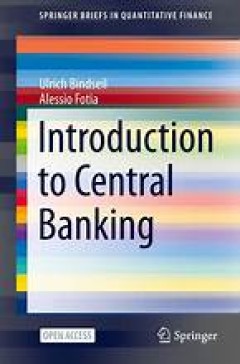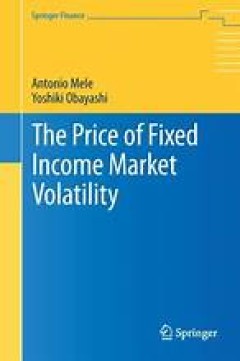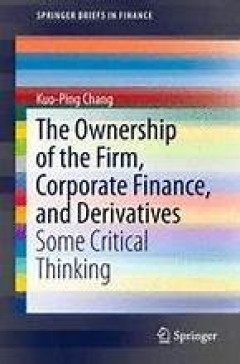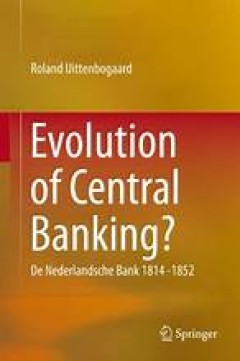Filter by

Global Fintech: Financial Innovation in the Connected World
How the global financial services sector has been transformed by artificial intelligence, data science, and blockchain. Artificial intelligence, big data, blockchain, and other new technologies have upended the global financial services sector, creating opportunities for entrepreneurs and corporate innovators. Venture capitalists have helped to fund this disruption, pouring nearly $500 billi…
- Edition
- Ed. 1
- ISBN/ISSN
- 9780262369534
- Collation
- -
- Series Title
- -
- Call Number
- 006.3 GLO b

New Economic Engine: Effective Government and Efficient Market
This book contains at least three main highlights: breaking through the limitations of the mainstream Western economics system and the market theory framework, correctly explaining the successful experience of China’s reform and opening up over the past 40 years from an economic perspective, and developing a new economics system and market theory. China’s reform and opening up and innovativ…
- Edition
- 1
- ISBN/ISSN
- 978-981-15-2922-1
- Collation
- Economic
- Series Title
- -
- Call Number
- 338.1

Advances in Finance & Applied Economics
Discussing a wide range of topics of contemporary relevance from the domain of finance and economics, this book presents a collection of twenty-four research papers, which were selected on the basis of their topicality, the novelty of their methods, and the importance of their subject matter. All papers pursue an empirical approach to address key research issues, and are categorized into thr…
- Edition
- 1
- ISBN/ISSN
- 978-981-13-1696-8
- Collation
- Ekonomi
- Series Title
- -
- Call Number
- 330

Venture Capital and the Inventive Process VC Funds for Ideas-Led Growth
The inventive process is the most important driver of economic growth. Venture capital (VC) funds have contributed a small, but critical, part to the inventive process. VC funds boost the inventive process by selecting a small number of radical ideas out a large flow of ideas and invest in their testing, development and commercialization. They bring together capital from general savings, manage…
- Edition
- -
- ISBN/ISSN
- 978-1-137-53660-0
- Collation
- -
- Series Title
- -
- Call Number
- -

Challenges for Central Banking
It may be possible to claim that, generally speaking, central banks around the world have never before held such a central and well-respected position in their respective countries as they hold now. Their tasks seem to be reasona bly well defined and the mandate given to them to guarantee price stability has so far worked more successfully than was perhaps expected. Inflation is lower than it…
- Edition
- 1
- ISBN/ISSN
- 978-1-4757-3306-8
- Collation
- Bisnis
- Series Title
- -
- Call Number
- 650

Introduction to Central Banking
This open access book gives a concise introduction to the practical implementation of monetary policy by modern central banks. It describes the conventional instruments used in advanced economies and the unconventional instruments that have been widely adopted since the financial crisis of 2007–2008. Illuminating the role of central banks in ensuring financial stability and as last resort len…
- Edition
- 1
- ISBN/ISSN
- 978-3-030-70884-9
- Collation
- Banking
- Series Title
- SpringerBriefs in Quantitative Finance
- Call Number
- 332

The Price of Fixed Income Market Volatility
Fixed income volatility and equity volatility evolve heterogeneously over time, co-moving disproportionately during periods of global imbalances and each reacting to events of different nature. While the methodology for options-based "model-free" pricing of equity volatility has been known for some time, little is known about analogous methodologies for pricing various fixed income volatilities…
- Edition
- 1
- ISBN/ISSN
- 978-3-319-26523-0
- Collation
- Manajemen
- Series Title
- Springer Finance
- Call Number
- 658

The Ownership of the Firm, Corporate Finance, and Derivatives
This book clarifies several ambiguous arguments and claims in finance and the theory of the firm. It also serves as a bridge between derivatives, corporate finance and the theory of the firm. In addition to mathematical derivations and theories, the book also uses anecdotes and numerical examples to explain some unconventional concepts. The main arguments of the book are: (1) the ownership of t…
- Edition
- 1
- ISBN/ISSN
- 978-981-287-353-8
- Collation
- XII, 76, 11 b/w illustrations
- Series Title
- SpringerBriefs in Finance
- Call Number
- XII, 76, 11 b/w illust

Evolution of Central Banking?
The book analyses the establishment of De Nederlandsche Bank and its early development as a case study to test competing theories on the historical development of central banking. It is shown that the establishment of DNB can be explained by both the fiscal theory and the financial stability theory. Later development makes clear that the financial stability role of DNB prevailed. DNB´s bank no…
- Edition
- 1
- ISBN/ISSN
- 978-3-319-10617-5
- Collation
- -
- Series Title
- XV, 170 14 illustrations in colour ,
- Call Number
- -

Financial Report 2022
In 2022, the Bank’s lending signatures amounted to €65.1 billion. This report includes the 2022 financial statements and audit reports both for the EIB and the EIB Group.
- Edition
- -
- ISBN/ISSN
- 9789286155079
- Collation
- -
- Series Title
- -
- Call Number
- 354
 Computer Science, Information & General Works
Computer Science, Information & General Works  Philosophy & Psychology
Philosophy & Psychology  Religion
Religion  Social Sciences
Social Sciences  Language
Language  Pure Science
Pure Science  Applied Sciences
Applied Sciences  Art & Recreation
Art & Recreation  Literature
Literature  History & Geography
History & Geography